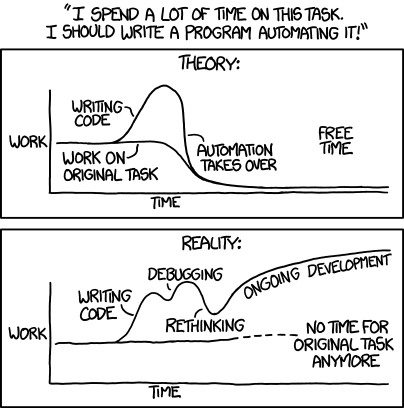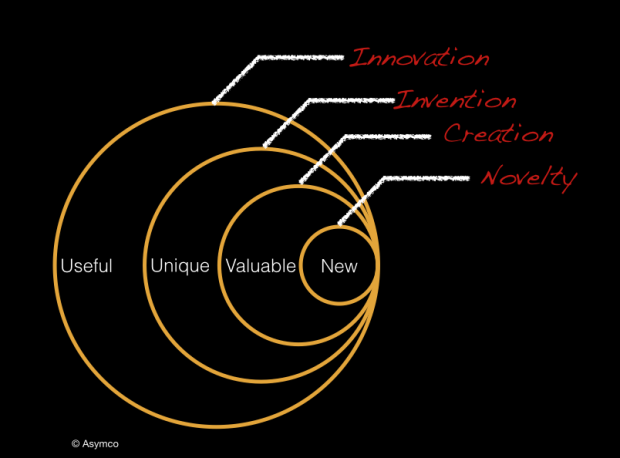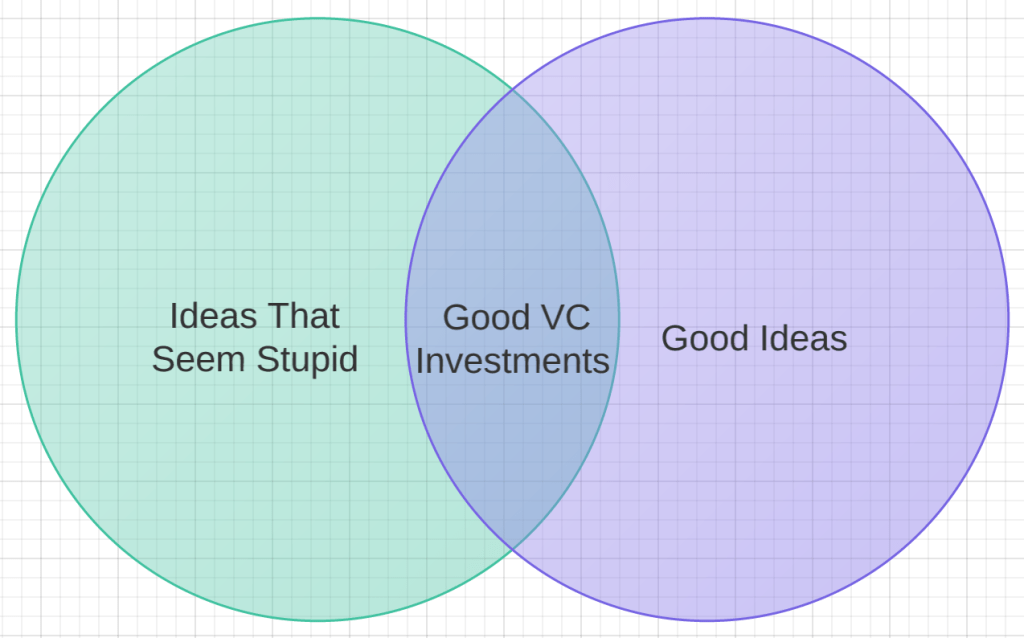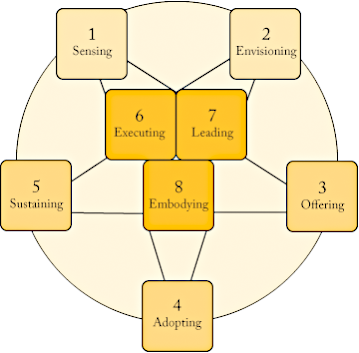Innovation is about finding a better way of doing something. Like many of the new development buzzwords (which many of them are over-used on many business documents), the concept of innovation originates from the world of business. It refers to the generation of new products through the process of creative entrepreneurship, putting it into production, and diffusing it more widely through increased sales. Innovation can be viewed as t he application of better solutions that meet new requirements, in-articulated needs, or existing market needs. This is accomplished through more effective products, processes, services, technologies, or ideas that are readily available to markets, governments and society. The term innovation can be defined as something original and, as a consequence, new, that “breaks into” the market or society.
Innoveracy: Misunderstanding Innovation article points out that there is a form of ignorance which seems to be universal: the inability to understand the concept and role of innovation. The way this is exhibited is in the misuse of the term and the inability to discern the difference between novelty, creation, invention and innovation. The result is a failure to understand the causes of success and failure in business and hence the conditions that lead to economic growth. The definition of innovation is easy to find but it seems to be hard to understand. Here is a simple taxonomy of related activities that put innovation in context:
- Novelty: Something new
- Creation: Something new and valuable
- Invention: Something new, having potential value through utility
- Innovation: Something new and uniquely useful
The taxonomy is illustrated with the following diagram.
The differences are also evident in the mechanisms that exist to protect the works: Novelties are usually not protectable, Creations are protected by copyright or trademark, Inventions can be protected for a limited time through patents (or kept secret) and Innovations can be protected through market competition but are not defensible through legal means.
Innovation is a lot of talked about nowdays as essential to businesses to do. Is innovation essential for development work? article tells that innovation has become central to the way development organisations go about their work. In November 2011, Bill Gates told the G20 that innovation was the key to development. Donors increasingly stress innovation as a key condition for funding, and many civil society organisations emphasise that innovation is central to the work they do.
Some innovation ideas are pretty simple, and some are much more complicated and even sound crazy when heard first. The is place for crazy sounding ideas: venture capitalists are gravely concerned that the tech startups they’re investing in just aren’t crazy enough:
Not all development problems require new solutions, sometimes you just need to use old things in a slightly new way. Development innovations may involve devising technology (such as a nanotech water treatment kit), creating a new approach (such as microfinance), finding a better way of delivering public services (such as one-stop egovernment service centres), identifying ways of working with communities (such as participation), or generating a management technique (such as organisation learning).
Theorists of innovation identify innovation itself as a brief moment of creativity, to be followed by the main routine work of producing and selling the innovation. When it comes to development, things are more complicated. Innovation needs to be viewed as tool, not master. Innovation is a process, not a one time event. Genuine innovation is valuable but rare.
There are many views on the innovation and innvation process. I try to collect together there some views I have found on-line. Hopefully they help you more than confuze. Managing complexity and reducing risk article has this drawing which I think pretty well describes innovation as done in product development:
8 essential practices of successful innovation from The Innovator’s Way shows essential practices in innovation process. Those practices are all integrated into a non-sequential, coherent whole and style in the person of the innovator.
In the IT work there is lots of work where a little thinking can be a source of innovation. Automating IT processes can be a huge time saver or it can fail depending on situation. XKCD comic strip Automation as illustrates this:

System integration is a critical element in project design article has an interesting project cost influence graphic. The recommendation is to involve a system integrator early in project design to help ensure high-quality projects that satisfy project requirements. Of course this article tries to market system integration services, but has also valid points to consider.
Core Contributor Loop (CTTDC) from Art Journal blog posting Blog Is The New Black tries to link inventing an idea to theory of entrepreneurship. It is essential to tune the engine by making improvements in product, marketing, code, design and operations.






5,407 Comments
Tomi Engdahl says:
Chinese scientists unveil a potential asthma cure with innovative cell therapy in one shot. https://ie.social/4LKdY
Tomi Engdahl says:
Litiummetallianodi nostaa akun kapasiteetin yli 10-kertaiseksi
https://etn.fi/index.php/13-news/16288-litiummetallianodi-nostaa-akun-kapasiteetin-yli-10-kertaiseksi
Korealaistutkijat Pohangin tiede- ja teknologiayliopistosta (POSTECH) ja in ja Korean energiatutkimusinstituutista (KIER) ovat kehittäneet uuden kolmiulotteisen polymeerirakenteen litiummetalliakkuja varten. Sen parantaa merkittävästi litiumionien kuljetusta ja akun suorituskykyä.
POSTECHin professori Soojin Park ja tohtori Dong-Yeob Han ja KIER:n tohtori Gyujin Songin yhdessä tekemä tutkimus julkaistiin äskettäin kansainvälisessä Advanced Science -lehdessä.
Elektronisissa laitteissa, kuten sähköajoneuvoissa ja älypuhelimissa, käytettävä akkuteknologia kehittyy jatkuvasti. Nyt tutkitaan erityisesti litiummetallianodeita, joiden energiakapasiteetti on 3860 mAh/g. Lukema on yli kymmenen kertaa enemmän kuin tällä hetkellä markkinoilla olevissa kaupallisissa grafiittianodeissa. Litiummetallianodit voivat varastoida enemmän energiaa pienempään tilaan ja, toisin kuin grafiitti tai pii, ne voivat osallistua suoraan sähkökemiallisiin reaktioihin elektrodeina.
Tomi Engdahl says:
A 2023 WHO report suggests that many countries will not meet imminent dietary salt reduction targets, with a heavy toll on mortality.
Salt has been valued for its ability to preserve and season food for thousands of years. But today, the average person consumes more than double the recommended level according to the World Health Organization (WHO).
A London-based meeting of minds looked at how to accelerate change.
https://www.nature.com/articles/d42473-024-00038-x?fbclid=IwZXh0bgNhZW0CMTEAAR0hEynRaUQjZ3SXaGLPcf_QO01NvVibOhvU_GTBFaL1FFyNgq1ubBEz-wA_aem_ATIboLqIOAM4tG-JAXDc5bPZNhMkHLoOpckp3inX4nAGgTMJ9aYdjw19EX_p0Q14D8qAJGsVNVMc38n_SK3_caaB
Tomi Engdahl says:
https://hackaday.com/2024/06/04/pasteurisation-probably-why-you-survived-childhood/
Tomi Engdahl says:
HOW TO PUT A DATA CENTER IN A SHOEBOX
Imec’s plan to use superconductors to shrink computers
https://spectrum.ieee.org/superconducting-computer
SCIENTISTS HAVE PREDICTED that by 2040, almost 50 percent of the world’s electric power will be used in computing. What’s more, this projection was made before the sudden explosion of generative AI. The amount of computing resources used to train the largest AI models has been doubling roughly every 6 months for more than the past decade. At this rate, by 2030 training a single artificial-intelligence model would take one hundred times as much computing resources as the combined annual resources of the current top ten supercomputers. Simply put, computing will require colossal amounts of power, soon exceeding what our planet can provide.
One way to manage the unsustainable energy requirements of the computing sector is to fundamentally change the way we compute. Superconductors could let us do just that.
Superconductors offer the possibility of drastically lowering energy consumption because they do not dissipate energy when passing current. True, superconductors work only at cryogenic temperatures, requiring some cooling overhead. But in exchange, they offer virtually zero-resistance interconnects, digital logic built on ultrashort pulses that require minimal energy, and the capacity for incredible computing density due to easy 3D chip stacking.
Tomi Engdahl says:
A Remarkable New Study Suggests That Stonehenge Was Built to Amplify Sound During Ancient Ruling-Class Rituals
The stones also worked as a sound chamber, keeping outside noise out.
https://news.artnet.com/art-world/stonehenge-acoustics-1905935
Tomi Engdahl says:
Scientists Made a Quantum Leap in the Fifth State of Matter
And the implications are enormous.
https://www.popularmechanics.com/science/a60994940/bose-einstein-condensate-breakthrough/
Tomi Engdahl says:
The fifth state of matter—the ultracold Bose-Einstein condensate (BEC)—has been an invaluable tool in unlocking the secrets of quantum physics.
Tomi Engdahl says:
https://www.theguardian.com/society/article/2024/jun/03/extremely-impressive-melanoma-jab-trial-results-excite-doctors
Tomi Engdahl says:
Researchers develop water-based battery that has twice the energy density of lithium batteries: ‘Demonstrating significant stability’
https://www.yahoo.com/tech/researchers-develop-water-based-battery-120000544.html
Tomi Engdahl says:
https://www.cracked.com/pictofacts-573-22-foods-you-didnt-know-used-to-be-completely-different
Tomi Engdahl says:
Ksylitolista huolestuttava tutkimustieto – Tätä se tarkoittaa
Yhdysvaltalaistutkijat ovat löytäneet yhteyden ksylitolinkäytön ja vakavien terveysriskien välillä.
https://www.iltalehti.fi/elintavat/a/bef13622-1bac-4db1-9b07-94909060c864
Runsaat määrät ksylitolia saattavat lisätä sydänkohtausriskiä sekä myös aivoinfarktin ja kuoleman riskiä.
Näin osoittaa tuore tutkimus, joka on tehty Cleveland Clinic Lerner -instituutissa.
Runsas määrä ksylitolia saattaa tutkimuksen mukaan aiheuttaa verihiutalehyytymiä, jotka voivat vaeltaa sydämeen asti ja jouduttaa sydänkohtauksen alkamista. Hyytymät voivat kulkeutua myös aivoihin, jossa ne voivat olla jouduttamassa aivoinfarktia.
CNN:n artikkelissa todetaan, että hyytymien riski on erityisen suuri niillä, joilla on tyypin 2 diabetes.
Ksylitolilla makeutetaan muun muassa purukumeja, hammastahnoja, makeisia ja juomia.
Common low-calorie sweetener linked to heart attack and stroke, study finds
https://edition.cnn.com/2024/06/06/health/xylitol-heart-attack-stroke-wellness/index.html
A low-calorie sweetener called xylitol used in many reduced-sugar foods and consumer products such as gum and toothpaste may be linked to nearly twice the risk of heart attacks, stroke and death in people who consume the highest levels of the sweetener, a new study found.
“When you eat sugar, your glucose level may go up 10% or 20% but it doesn’t go up a 1,000-fold,” said Hazen, who also directs the Cleveland Clinic’s Center for Microbiome and Human Health.
“Humankind has not experienced levels of xylitol this high except within the last couple of decades when we began ingesting completely contrived and sugar-substituted processed foods,” he added.
Worrisome blood clots occur
In 2023, the same researchers found similar results for another low-calorie sweetener called erythritol, which is used as a bulking sugar in stevia, monkfruit and keto reduced-sugar products.
Additional lab and animal research presented in both papers revealed erythritol and xylitol may cause blood platelets to clot more readily. Clots can break off and travel to the heart, triggering a heart attack, or to the brain, triggering a stroke.
Some 61% of American adults will have cardiovascular disease by 2050, according to a recent prediction by the American Heart Association. Reducing clotting activity is a key treatment used by cardiologists, so any additional clotting in platelets is a bad sign
“When someone has a heart attack, we give them aspirin or drugs like clopidogrel, or Plavix, to counter platelet activity. These sugar alcohols appear to be enhancing platelet activity, which is concerning,” said Freeman, who was not associated with the new research.
What is xylitol?
As sweet as sugar with less than half the calories, xylitol is often used in sugarless gum, breath mints, toothpaste, mouthwash, cough syrup and chewable vitamins. It is frequently added in larger quantities to candy, baked goods, cake mixes, barbecue sauces, ketchup, peanut butter, puddings, pancake syrup and more.
Xylitol is a sugar alcohol, a carbohydrate found naturally in foods such as cauliflower, eggplant, lettuce, mushrooms, spinach, plums, raspberries and strawberries. However, the amount of xylitol found in such natural sources is tiny, Hazen said.
“If you actually do the calculation, it literally takes a tonnage of fruit to be equivalent to one diabetic cookie that can have like nine grams of xylitol, which is a typical label amount,” he said. “It would be like eating salt at the level of a salt lick.”
For commercial use, however, xylitol is made from corncobs, birch trees or genetically engineered bacteria.
“It’s sold as a so-called natural sweetener, and because xylitol doesn’t spike blood sugar levels, it’s also marketed as low carb and keto friendly,” Hazen said.
Many professional associations also recommend xylitol as a sugar substitute for patients with obesity, diabetes or prediabetes to improve glycemic control, he added.
“Yet people at risk for diabetes are among the most vulnerable for clotting events,” he said. “We’re targeting the wrong people.”
Exposure has increased over the last two decades, Hazen said, because the US Food and Drug Administration recognizes sugar alcohols as GRAS, or “generally recognized as safe.”
“Xylitol is cheaper to make than cane sugar and so more and more keeps getting incorporated as a sugar substitute into food. Some 12-ounce drinks that use xylitol as a major artificial sweetener can contain 30 grams or more,” he said. “You can even buy it in bulk at the grocery store where you’re told to use as a one-to-one substitute for sugar in home cooking.”
Only two of many alcohol sugars
The study, published Thursday in the European Heart Journal, began as a way of finding unknown chemicals or compounds in a person’s blood that might predict the risk for a heart attack, stroke or death within the next three years.
They found a number of alcohol sugars that appeared to have an impact on cardiovascular function, including xylitol and erythritol. Erythritol is the predominant ingredient by weight in many stevia and monkfruit products.
The February 2023 erythritol in study found the risk of heart attack and stroke nearly doubled within three years when people had the highest levels of erythritol in their blood.
For the new study on xylitol, the results were basically the same — people with the highest levels of xylitol compared to those with the lowest levels had nearly twice the risk of heart attack, stroke and death, Hazen said.
“There’s a receptor on our platelets, which we as yet don’t understand, that is recognizing this molecule and signaling to the platelet to be more prone to clot,”
Tomi Engdahl says:
https://www.msn.com/fi-fi/uutiset/other/yll%C3%A4tt%C3%A4v%C3%A4t-asiat-joihin-voi-k%C3%A4ytt%C3%A4%C3%A4-mikroa/ss-AA1mg68P?ocid=entnewsntp&pc=HCTS&cvid=a8491224388c438db3a43daf70ac8e96&ei=20#image=3
Tomi Engdahl says:
https://etn.fi/index.php/13-news/16312-uusi-elektrolyytti-parantaa-akun-tehoa-ja-kaeyttoeikaeae
Tomi Engdahl says:
https://hackaday.com/2024/06/10/bidirectional-data-transfer-through-mud/
Tomi Engdahl says:
Harvard Scientists Say There May Be an Unknown, Technologically Advanced Civilization Hiding on Earth
A provocative hypothesis.
https://futurism.com/harvard-scientists-unknown-civilization-cryptoterrestrials
In a new paper that’s bound to raise eyebrows in the scientific community, a team of researchers from Harvard and Montana Technological University speculates that sightings of “Unidentified Anomalous Phemonemona” (UAP) — bureaucracy-speak for UFOs, basically — “may reflect activities of intelligent beings concealed in stealth here on Earth (e.g., underground), and/or its near environs (e.g., the Moon), and/or even ‘walking among us’ (e.g., passing as humans).”
Tomi Engdahl says:
Tutkijoilta kovia sanoja Thermacellista: “Voimakas hermomyrkky”
https://www.is.fi/kotimaa/art-2000010491220.html
Hyönteistutkijan taannoiset kommentit ovat jälleen nostaneet suositun hyttyskarkottimen keskelle kohua.
Thermacell-hyttyskarkottimesta on tullut tuttu näky suomalaisten terasseilla. Suosiosta huolimatta laitteesta on tullut kiistanalainen aihe sekä kansalaisten että tutkijoiden keskuudessa.
Monet tutkijat ovat korostaneet harkintaa laitteen käytössä, sillä Thermacellissä käytettävä pralletriini ei vaikuta vain hyttysiin, vaan on myrkyllinen monille eliöille.
Keskustelu Thermcellin vaaroista on kuitenkin liioiteltua, väittää Oulun yliopiston hyönteistutkija, yli-intendentti Marko Mutanen. Taannoisessa Kalevan haastattelussa Mutanen moitti laitteen kritisoijia ”tekopyhiksi”.
Helsingin Sanomien haastattelussa Mutanen taas kertoo, että keskustelu hyttyskarkottimen haitoista on lähtenyt raiteiltaan. Hänen mukaansa laitteessa käytettävän pralletriinin haitallisia vaikutuksia ympäristölle on liioiteltu.
– Monille on syntynyt sellainen mielikuva, että Thermacell tappaa kaiken elävän ympäriltään. Se ei pidä paikkaansa, Mutanen kertoo.
Mutasen mukaan mikään tutkimus ei osoita Thermacell-laitteen käytöllä olevan pitkäaikaisvaikutuksia ympäristöön.
Ilta-Sanomien haastattelema Oulun yliopiston dosentti ja eläinekologi Olli Loukola kyseenalaistaa Mutasen kommentit. Loukola on tunnettu mehiläisiä käsittelevästä tutkimuksesta.
Hänen mukaansa ei ole olemassa riippumatonta tutkimusta, joka näyttäisi kyseisen aineen käytön turvallisuuden hyönteisille, jotka eivät ole laitteen kohteena, esimerkiksi pölyttävät hyönteiset. Muun muassa pralletriinin vaikutuksia hyönteisten suuntavaistoon ei ole tutkittu.
– Pralletriini on voimakas hermomyrkky. Varovaisuusperiaatteen mukaan laitteiden käyttöä ei voi suositella missään, Loukola kertoo.
Thermacellin vaikutuksia käsitteleviä tutkimuksia hän ei pidä luotettavana, sillä ne ovat yrityksen itsensä rahoittamia.
Thermacellin itsensä rahoittamat tutkimukset eivät Mutasen mukaan ole ongelma, jos itse tutkimus on tehty hyvin.
LaitteeSSA käytetty pralletriini on hyönteisille ja vesistön eläimille erittäin myrkyllinen. Jyväskylän yliopiston kemian professorin Petri Pihkon mukaan yhdessä Thermacell-tyynyssä on tarpeeksi pralletriinia tappamaan miljoona hyönteistä.
Thermacellia valmistavan Proviter Oy:n tiedotteen mukaan pralletriini höyrystyy kerralla hyvin pieni määrä. Hyönteiset aistivat höyrystetyn myrkyn ilmassa ja pyrkivät välttämään sitä. Pralletriinin tiedetään hajoan ilmassa nopeasti, eikä se nykytutkimuksen valossa kerry ympäristöön.
Pihko arvelee, että Thermacellin käytöstä tai käyttämättä jättämisestä on tullut eräänlainen symboli.
– Laitteen käyttöön kanavoituu arvoja.
Tomi Engdahl says:
Ina Fried / Axios:
IBM and Xerox PARC engineer Lynn Conway, who helped shape the way chips are designed and undertook a gender transition in 1968, died last weekend at age 86
Lynn Conway, a true pioneer, passes away at 86
https://www.axios.com/2024/06/12/lynn-conway-pioneer-passes-away
ormer IBM and Xerox PARC engineer Lynn Conway, who helped shape the way chips are designed, died last weekend at age 86.
The big picture: Conway broke ground both for her contributions to the tech industry and for her gender transition at a time when such a move was rare among professionals.
In the 1970s, Conway helped author “Introduction to VLSI Systems,” a seminal book in the field of chip design that became the standard textbook for a generation of aspiring semiconductor workers.
The VLSI approach to semiconductors — the acronym stands for Very Large Scale Integration — paved the way for the modern “systems-on-a-chip” that power smartphones, laptops and other devices.
Catch up quick: Conway began her career at IBM Research in 1964; she was fired in 1968 after announcing her plans to transition.
In 2020, IBM formally apologized and held a public event in her honor.
After IBM, she joined Xerox’s famed Palo Alto Research Center (PARC). After leaving Xerox PARC, Conway went on to work at DARPA and then taught electrical engineering and computer science from 1985 until her retirement in 1998.
What they’re saying: Conway’s death brought an ourpouring of online appreciation both from technologists, such as former Microsoft Windows boss Steven Sinofsky, and from numerous transgender people in and out of the tech industry for whom Conway was a friend, mentor and inspiration.
Tomi Engdahl says:
Chinese scientists develop a new material promising near-infinite lifespans for memory storage chips: https://ie.social/4A5vo
Tomi Engdahl says:
The sun’s magnetic field is about to flip. Here’s what to expect.
News
By Daisy Dobrijevic published 2 days ago
The reversal could have a beneficial effect on Earth.
https://www.space.com/sun-magnetic-field-flip-solar-maximum-2024?fbclid=IwZXh0bgNhZW0CMTEAAR1OcwDtGJWOgIWL7gdH0BsIH-QK6vtosp9_6t29vduQr3meLUTD0vUWrE8_aem_ZmFrZWR1bW15MTZieXRlcw
Tomi Engdahl says:
Earth Has a Third Form of Life—and It Could Change How We Generate Power
What if we tapped into billions of years of evolution to harness a greener future?
https://www.popularmechanics.com/science/animals/a61078291/third-form-life-hydrogen-enzyme-energy-breakthrough/
Earth’s immense web of life fill three broad domains—archaea, bacteria, and eukarya.
Scientists from Monash University recently discovered hydrogen-producing enzymes in archaea, which were thought to only exist in the other two orders.
These archaea enzymes, known as hydrogenases, are smaller and more complex than those found in the other two domains, and could help biotech firms develop better, more efficient hydrogen energy systems.
Tomi Engdahl says:
Harvard Scientists Say There May Be an Unknown, Technologically Advanced Civilization Hiding on Earth
A provocative hypothesis.
https://futurism.com/harvard-scientists-unknown-civilization-cryptoterrestrials
Tomi Engdahl says:
https://www.cracked.com/pictofacts-356-21-tiny-mistakes-that-changed-history
Tomi Engdahl says:
TDK kertoo kehittäneensä uuden materiaalin, jolla kiinteään elektrolyyttiin perustuvan pariston tai akun energiatiheys kasvaa 100 kertaa aiempaa suuremmaksi. CeraCharge-materiaalin energiatiheys on 1000 wattituntia litraa kohti.
https://etn.fi/index.php/13-news/16338-sata-kertaa-enemmaen-energiaa-kiinteaeaen-akkuun
Tomi Engdahl says:
Mikrokondensaattori voi mullistaa piirien virransyötön
https://etn.fi/index.php/13-news/16337-mikrokondensaattori-voi-mullistaa-piirien-virransyoetoen
Pyrkiessään tekemään elektronisista laitteista entistä pienempiä ja energiatehokkaampia tutkijat haluavat tuoda energian varastoinnin suoraan mikrosiruille. Lawrence Berkeley National Laboratoryn (Berkeley Lab) ja UC Berkeleyn tutkijat ovat löytäneet tähän ratkjaisun mikrokondensaattorista.
Berkeleyn tutkijat ovat saavuttaneet ennätyskorkeat energia- ja tehotiheydet mikrokondensaattoreissa, jotka on valmistettu ohuista hafniumoksidi- ja zirkoniumoksidikalvoista. Laitteen valmistuksessa käytettiin materiaaleja ja valmistustekniikoita, jotka ovat jo laajalti yleisiä sirujen valmistuksessa. Tutkimus on julkaistu Nature-lehdessä.
Tutkimusta johtanut professori Sayeef Salahuddin sanoo, että nyt on osoitettu, ohuista kalvoista valmistettuihin mikrokondensaattoreihin on mahdollista varastoida paljon enemmän energiaa kuin tavallisiin eristäviin kalvoihin. – Lisäksi teemme tämän materiaalilla, jota voidaan käsitellä suoraan mikroprosessorien päällä.
Kiteiset kalvot valmistetaan HfO2:n ja ZrO2:n sekoituksesta, joka on kasvatettu atomikerrospinnoituksella, käyttäen teollisen sirun valmistuksen standardimateriaaleja ja tekniikoita. Kahden komponentin suhteesta riippuen kalvot voivat olla ferrosähköisiä, joissa kiderakenteessa on sisäänrakennettu sähköinen polarisaatio, tai antiferrosähköisiä, joissa rakenne voidaan työntää polaariseen tilaan sähkökenttää käyttämällä. Kun koostumus on viritetty juuri oikeaan, kondensaattoria lataamalla syntyvä sähkökenttä tasapainottaa kalvot ferrosähköisen ja antiferrosähköisen järjestyksen kääntöpisteessä, ja tämä epävakaus aiheuttaa negatiivisen kapasitanssiefektin, jossa materiaali voi helposti polarisoitua jopa pieni sähkökenttä.
Tomi Engdahl says:
https://www.frontiersin.org/whats-new/trending-articles-in-computer-science
Tomi Engdahl says:
https://phys.org/news/2024-06-framework-quantum-spherical-codes.html
Tomi Engdahl says:
https://www.iflscience.com/what-are-those-patterns-you-see-when-you-close-your-eyes-72589
Tomi Engdahl says:
https://www.iflscience.com/weird-signal-from-space-in-a-completely-new-stellar-behavior-74521
Tomi Engdahl says:
Quantum internet breakthrough after ‘quantum data’ transmitted through standard fiber optic cable for 1st time
News
By Drew Turney published June 7, 2024
The study used a specialized photon source to transmit, store and retrieve quantum data, a major component of quantum data transmission.
https://www.livescience.com/technology/computing/quantum-internet-breakthrough-after-quantum-data-transmitted-through-standard-fiber-optic-cable-for-1st-time
Tomi Engdahl says:
Study of photons in quantum computing reveals that when photons collide, they create vortices
https://phys.org/news/2024-06-photons-quantum-reveals-collide-vortices.html#google_vignette
Tomi Engdahl says:
Supercapacitors Are About To Blow Past Batteries as the Kings of Power
A new model lets scientists run ions through thousands of supercapacitor pores instead of just one at a time.
https://www.popularmechanics.com/science/a61016235/supercapacitors-batteries-kings-of-power/
Tomi Engdahl says:
THE DIAMOND INDUSTRY IS WITHERING AS BEAUTIFUL LAB-GROWN DIAMONDS DRIVE DOWN PRICES
https://futurism.com/the-byte/lab-grown-diamonds-industry-prices
Tomi Engdahl says:
https://www.vaisala.com/fi/blog/2024-05/aistit-ja-anturit-yhdistyvat-amos-rexin-uudessa-nayttelyssa
Tomi Engdahl says:
PLASMA PHYSICIST WARNS THAT ELON MUSK’S DISPOSABLE SATELLITES MAY BE DAMAGING THE EARTH’S MAGNETIC FIELD
https://futurism.com/the-byte/physicist-satellites-earth-magnetic-field
Tomi Engdahl says:
https://phys.org/news/2024-06-quantum-optical-antennas-powerful-atomic.html
Tomi Engdahl says:
Physicists confirm quantum entanglement persists between top quarks, the heaviest known fundamental particles
https://phys.org/news/2024-06-physicists-quantum-entanglement-persists-quarks.html
Tomi Engdahl says:
https://hackaday.com/2024/06/17/the-solar-system-is-weirder-than-you-think/
Tomi Engdahl says:
https://futurism.com/neoscope/scientists-find-microplastics-semen-sample
Tomi Engdahl says:
https://www.tomshardware.com/pc-components/cpus/startup-claims-it-can-boost-any-processors-performance-by-100x-flow-computing-introduces-its-cpu-20-paradigm
Tomi Engdahl says:
Medical practitioners are finding that new weight loss drugs like Wegovy and Zepbound are causing other chronic diseases like arthritis to go away on their own, at least for some patients.
https://futurism.com/neoscope/doctors-surprised-patients-semaglutide-cured-other-conditions
Tomi Engdahl says:
Tiedon ja valheen rajamailla: kertomus fysiikan tiedevilppitapauksesta
Tiedevilppi lymyilee tiedeinstituutioiden varjoissa. Mitä fysiikan alan vilppitapaus kertoo tieteen tekemisestä 2020-luvulla?
https://www.tieteessatapahtuu.fi/numerot/3-2024/tiedon-ja-valheen-rajamailla-kertomus-fysiikan-tiedevilppitapauksesta?fbclid=IwAR1vCwMqIjpa0iK_PlmEtcWpIX0ou3SQuRYNJYfrRyh85BD81d0KqhhK4Cw_aem_OM_-3Z0VvsIFeaNdI22h2A&utm_medium=paid&utm_source=fb&utm_id=6571468822105&utm_content=6571468825105&utm_term=6571468824305&utm_campaign=6571468822105
Tomi Engdahl says:
https://www.ladbible.com/lifestyle/food-and-drink/certain-amount-soy-sauce-kill-you-701687-20240618
Tomi Engdahl says:
Honoring the Legacy of Chip Design Innovator Lynn Conway The IEEE Fellow was a noted transgender-rights activist
https://spectrum.ieee.org/chip-design-innovator-lynn-conway
Tomi Engdahl says:
Tekoäly kehitti uudenlaisen kestomagneetin ilman harvinaisia maametalleja 200 kertaa nopeammin kuin ihminen
Uuden kestomagneetin valmistuksesta aiheutuisi 70 prosenttia vähemmän hiilidioksidipäästöjä kuin tämänhetkisestä alan standardista.
https://www.tekniikkatalous.fi/uutiset/tekoaly-kehitti-uudenlaisen-kestomagneetin-ilman-harvinaisia-maametalleja-200-kertaa-nopeammin-kuin-ihminen/070a4bbe-6d83-4024-b67f-885eadb1a48a#Echobox=1718811712
Tomi Engdahl says:
A Radical New Magnet Without Rare-Earth Metals Is About to Change Motors Forever
AI created it in just 3 months—and the implications are staggering.
https://www.popularmechanics.com/science/green-tech/a61147476/ai-developed-magnet-free-of-rare-earth-metals/
A U.K. tech company called Materials Nexus recently announced, with the help of its AI platform, they’d developed a magnet that’s completely free of rare earth metals. While this isn’t the first such device—other companies have also created “clean earth” magnets—they did so after a about decade of trial-and-error. According to Materials Nexus’ press release, the company’s AI platform took only three months to design its rare earth metal-free creation, MagNex.
“The current industry standard permanent magnet took decades to discover and even longer to develop into the products we use today; MagNex took just 3 months to design, synthesize and test—x200 faster,” the press statement reads. “MagNex can be produced at 20 percent of the material cost and a 70 percent reduction in material carbon emissions (kg CO2/kg), compared to rare earth element magnets currently on the market.”
While the arrival of capable artificial intelligence brings with it much deserved skepticism, as well as job security-induced anxiety, AI is particularly suited to be revolutionary in the field of materials science. According to the Materials Project, an open-source database meant to help support research into new materials, humans discovered 20,000 materials through experimentation—a number that was upped to 48,000 thanks to the dawn of computing
Tomi Engdahl says:
Japanese researchers testing particle accelerator for chipmaking — researchers claim EUV-like lithography capabilities
https://www.tomshardware.com/tech-industry/japanese-researchers-mull-using-particle-accelerator-for-chipmaking-researchers-claim-euv-like-lithography-capabilities
Intel, Samsung Foundry, and TSMC use ASML’s EUV lithography machines, which are capable of ‘printing’ semiconductors at a 13nm resolution, to build chips on their latest fabrication nodes. But using a laser produced plasma (LPP) EUV light source (which is a CO2 laser applied to small tin droplets) is not the only way to generate 13.5 nm EUV radiation to ‘print’ chips. Researchers in Japan are exploring the usage of free-electron lasers (FELs) from particle accelerators to make chips with leading-edge feature sizes, reports Spectrum.IEEE.org.
Tomi Engdahl says:
https://www.lahitapiola.fi/yritys/vakuutukset/omaisuusvakuutukset/kybervakuutus/loma-on-kyberrikollisten-kulta-aikaa-tama-kaikkien-yritysten-pitaisi-tehda/
Tomi Engdahl says:
https://www.asiakastieto.fi/omatieto/fi/tuotteet/tietovahti
Tomi Engdahl says:
Cow poop might make cleaner hydrogen gas a reality
The new ‘transformative’ production method substitutes fossil fuels for biochar made from animal and agricultural waste.
https://www.popsci.com/technology/hydrogen-gas-cows/